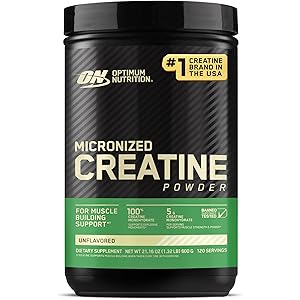Optimum Nutrition Micronized Creatine Monohydrate Powder, Unflavored, 120 Servings, 600 Grams (Packaging May Vary)
$27.96 (as of September 18, 2025 18:22 GMT +00:00 - More infoProduct prices and availability are accurate as of the date/time indicated and are subject to change. Any price and availability information displayed on [relevant Amazon Site(s), as applicable] at the time of purchase will apply to the purchase of this product.)Understanding the Macros 60 20 20 Ratio
The macros 60 20 20 ratio is a popular macronutrient distribution that emphasizes a higher intake of carbohydrates, moderate protein, and lower fat. This specific ratio means that 60% of your daily caloric intake comes from carbohydrates, 20% from protein, and 20% from fats. This balance is often favored by athletes and fitness enthusiasts looking to optimize their energy levels while maintaining muscle mass.
Benefits of the Macros 60 20 20 Approach
Adopting the macros 60 20 20 strategy can lead to numerous benefits, particularly for those engaged in high-intensity workouts. The high carbohydrate intake provides the necessary energy for endurance activities, while the protein supports muscle recovery and growth. Additionally, the moderate fat intake ensures that essential fatty acids are included in the diet, promoting overall health without excessive calorie consumption.
How to Calculate Your Macros 60 20 20
To effectively implement the macros 60 20 20 diet, you first need to determine your daily caloric needs. Once you have your total daily energy expenditure (TDEE), you can calculate the grams of each macronutrient. For example, if your TDEE is 2,000 calories, you would consume 1,200 calories from carbohydrates (300g), 400 calories from protein (100g), and 400 calories from fats (44g).
Food Sources for Each Macronutrient
When following the macros 60 20 20 plan, it’s crucial to choose the right food sources. For carbohydrates, focus on whole grains, fruits, and vegetables. These foods not only provide energy but also essential vitamins and minerals. For protein, lean meats, fish, eggs, and plant-based sources like legumes and tofu are excellent choices. Healthy fats can be obtained from avocados, nuts, seeds, and olive oil, ensuring a balanced intake.
Meal Planning with Macros 60 20 20
Effective meal planning is essential for adhering to the macros 60 20 20 ratio. Start by preparing meals that incorporate a variety of food groups to meet your macronutrient goals. For instance, a meal could consist of grilled chicken (protein), quinoa (carbohydrate), and a side of mixed vegetables with olive oil (fat). By planning ahead, you can avoid the temptation of unhealthy snacks and ensure you stay on track.
Adjusting the Macros for Individual Needs
While the macros 60 20 20 ratio is effective for many, individual needs may vary based on factors such as age, gender, activity level, and fitness goals. Some individuals may require a higher protein intake for muscle building, while others may benefit from adjusting their carbohydrate intake for weight loss. It’s important to listen to your body and make adjustments as necessary.
Common Mistakes to Avoid
When following the macros 60 20 20 diet, there are several common pitfalls to avoid. One mistake is neglecting the quality of food sources. It’s essential to prioritize whole, nutrient-dense foods over processed options, even if they fit within your macro goals. Another mistake is failing to track your intake accurately, which can lead to imbalances and hinder progress.
Supplementing Your Diet
In some cases, individuals may consider supplementation to help meet their macros 60 20 20 goals. Protein powders can be a convenient way to increase protein intake, especially post-workout. Additionally, omega-3 supplements can help ensure adequate fat intake, particularly for those who may struggle to consume enough healthy fats through food alone.
Long-Term Sustainability of the Macros 60 20 20 Diet
Sustainability is key when it comes to any dietary approach, including the macros 60 20 20 ratio. To maintain long-term adherence, it’s important to incorporate a variety of foods and flavors into your meals. Allowing for occasional treats and flexibility can help prevent feelings of deprivation, making it easier to stick with the plan over time.


